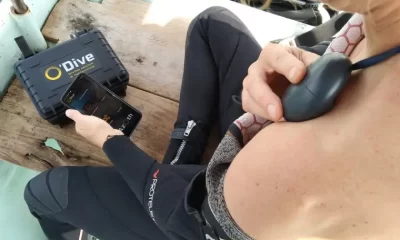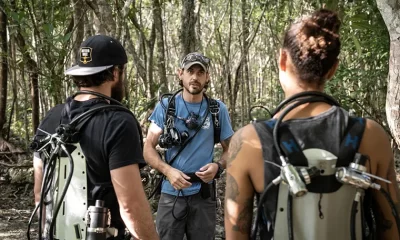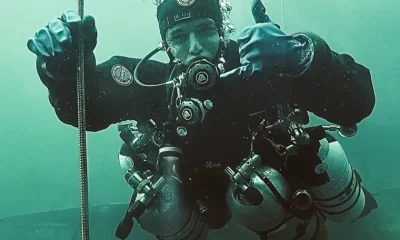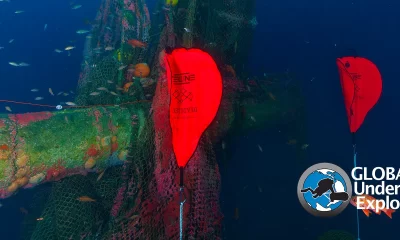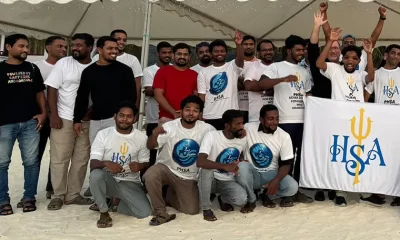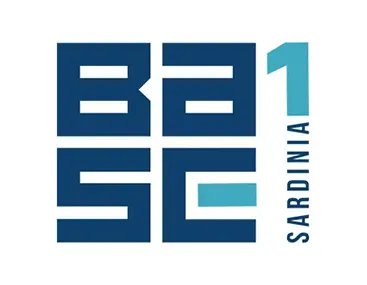Community
Can We Create A Safety Culture In Diving? Probably Not, Here’s Why.
How do we improve our safety culture in diving? Is it indeed something that we as a community of divers can affect? Human factors coach Gareth Lock argues that there is no magic bullet and, in fact, that the sports diving industry needs to make a fundamental shift in how it manages diver safety, if we are to improve safety. In other words, we still have a ways to go. The retired British Royal Air Force officer explains why.
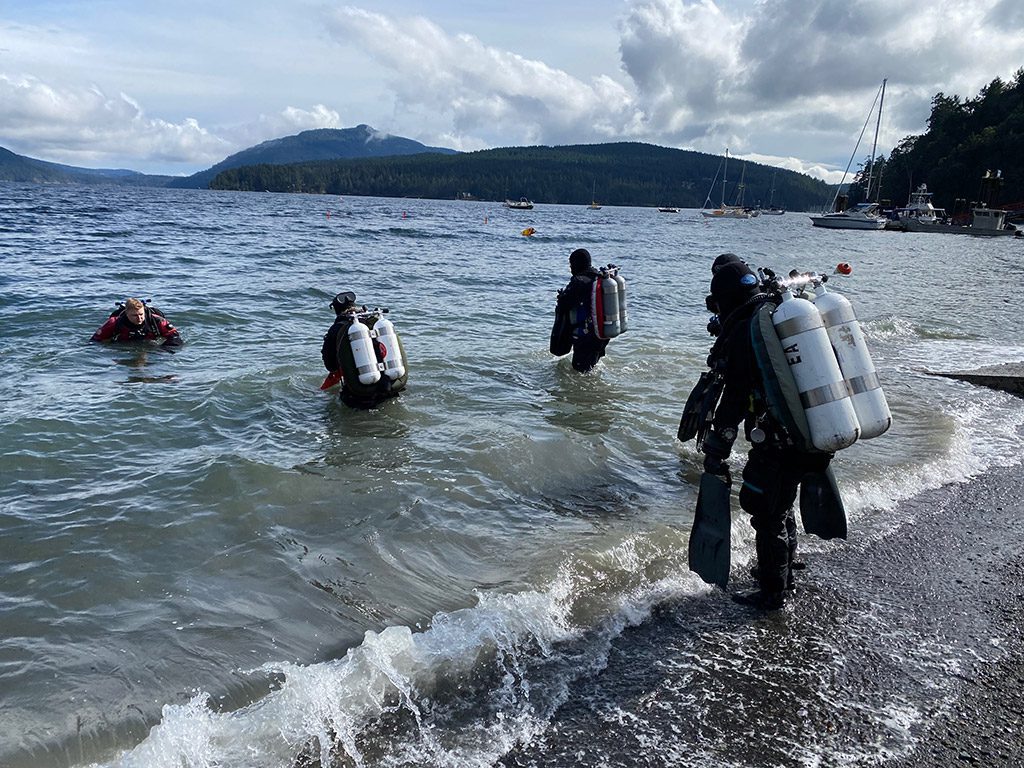
by Gareth Lock. Images courtesy of Gareth Lock.
Recently I was asked to give a presentation on how to improve a safety culture in diving. I was given 20 minutes. I took 30, and I barely scratched the surface. There is no quick and easy solution, and there certainly isn’t a magic bullet that will solve the problem. What it takes, which has been demonstrated in many other domains, is leadership, commitment, and a recognition that relying on compliance won’t work. Resilience and reliability are better than ’safety’ in a complex world.
The article starts by defining safety then looking at what culture is, and specifically what the diving culture is, before moving onto a Safety Culture and its constituent parts. By the end, you will see why I think that in order for a Safety Culture to exist in diving we need a fundamental shift in how the sports diving industry manages safety, or aims to manage safety, and we have a long way to go.
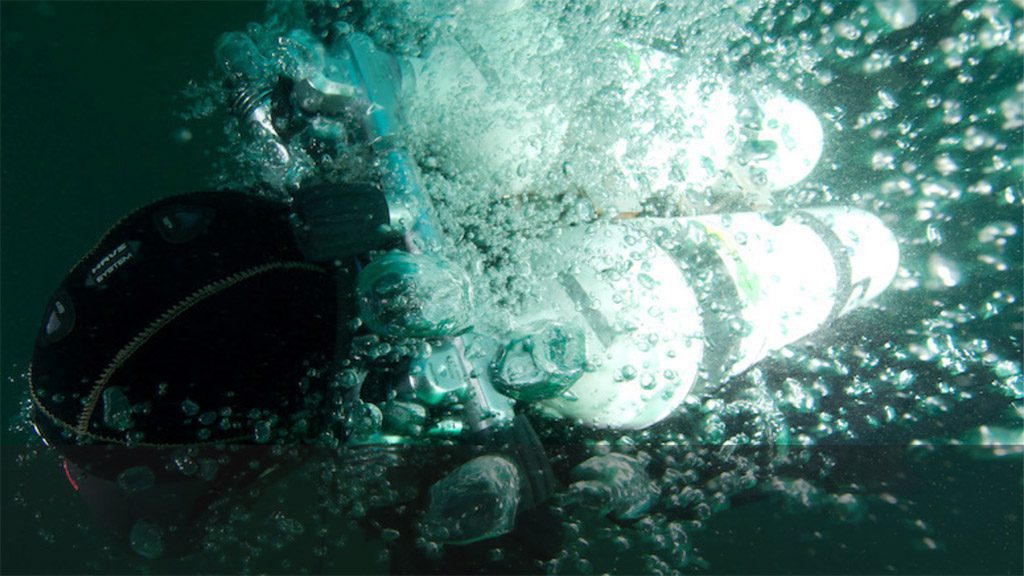
What is Safety?
Think about what safety means to you, what safety means to others, and what safety practically means in the context of an activity that takes place in an inherently unsafe environment?
The Oxford English Dictionary definition of ‘safety’ is “the state of being safe and protected from danger or harm”. A ‘state’ means it is not static. To be safe, we must constantly adapt our plans and actions based on the activity we are undertaking, the environment we are in, the equipment we are using, the people we are interacting with, and the feedback we are receiving.
According to Karl E Weick, “Safety is a dynamic non-event” (See: HRO and RE: A pragmatic perspective). This means that we only really see a lack of safety when things go wrong. Unfortunately, this means that safety is often measured by its absence rather than identifying and measuring what is keeping things ‘safe’. However, using past experiences as a predictor of future success doesn’t mean that the activity is safe. This is a very powerful fallacy, and you only have to read Chapter 8 of the Columbia Accident Investigation Board report to see that this mindset was used by NASA prior to both the Challenger and Columbia accidents. Chapter 8 looks at ‘History as a Cause’ and summarises the loss of Columbia, even though a huge number of reports were written about the loss of Challenger (See: Report of Columbia Accident Investigation Board, Volume I). I would suggest that this summary has parallels with how safety is managed in diving.
The research also states that safety does not exist at the equipment level, it exists at the system level (Leveson, 2011, Applying systems thinking to analyze and learn from events), which means we need to take into account all of those elements which are involved in the ‘system’.
We often think of diving as a local activity. We have our friends, the boat, the dive location, the weather, the underwater environment, and because we can define system in any way that we like by drawing boundaries around people, things, and places, we would be correct in this local definition of system. However, in the wider sense, diving also includes many other stakeholders: other divers, instructors, dive centre staff, boat crew, training agency staff, social media communities, designers and engineers of diving equipment, standards committees, research staff, hyperbaric medical staff, insurance companies, plus many more. Each one of those individuals and organisations contribute to the safety of the diver on their dive. They may not have direct influence or control, but they are all part of the diving system and so influence safety. More on this later.
Some might think that safety is about compliance. If the rules are followed, then the diver or instructor will be safe. Rules cannot be written for every situation, and in many cases, rules and procedures are for protection against litigation, rather than to ensure operational safety. Unfortunately, there are numerous examples whereby following the rules can create unsafe situations e.g., taking four divers on a DSD with a single instructor, staying longer on deco stop to clear the computer but running out of gas, or hanging on a shot-line in strong currents for decompression when a drifting decompression would reduce muscle fatigue/induced DCI. Therefore, understanding why the rules are in place is essential, because you might need to step outside the boundaries to be operationally safe, even though you are non-compliant.
The definition for safety that I have developed as part of my studies is “An active, adaptive process which involves making sense of the task in the context of the environment to successfully achieve explicit and implied goals, with the expectation that no harm or damage will occur.” Longer, but covers what is needed.
What is Culture?
A culture is often described as “the way we do things around here.” We can’t see culture when we are immersed in it, the same as a fish cannot see the water it swims in. However, we can see the behaviours that are associated with the culture.

This image of a ’Culture Cloud’ from Dr Rob Long shows how complicated culture can be and all the parts that go into it. The images also show that macro cultures, those at the national or regional level, influence organisational culture (meso cultures), which then influences team or group cultures (micro-cultures). The top influences the bottom, even if they don’t think they do. This is why I do not believe you can separate how a dive centre operates from the organisational culture of its primary training agency. The agency might not have control, but it certainly exerts influence given the interactions that happen in terms of marketing, training materials, quality control, initial instructor development, and updates.
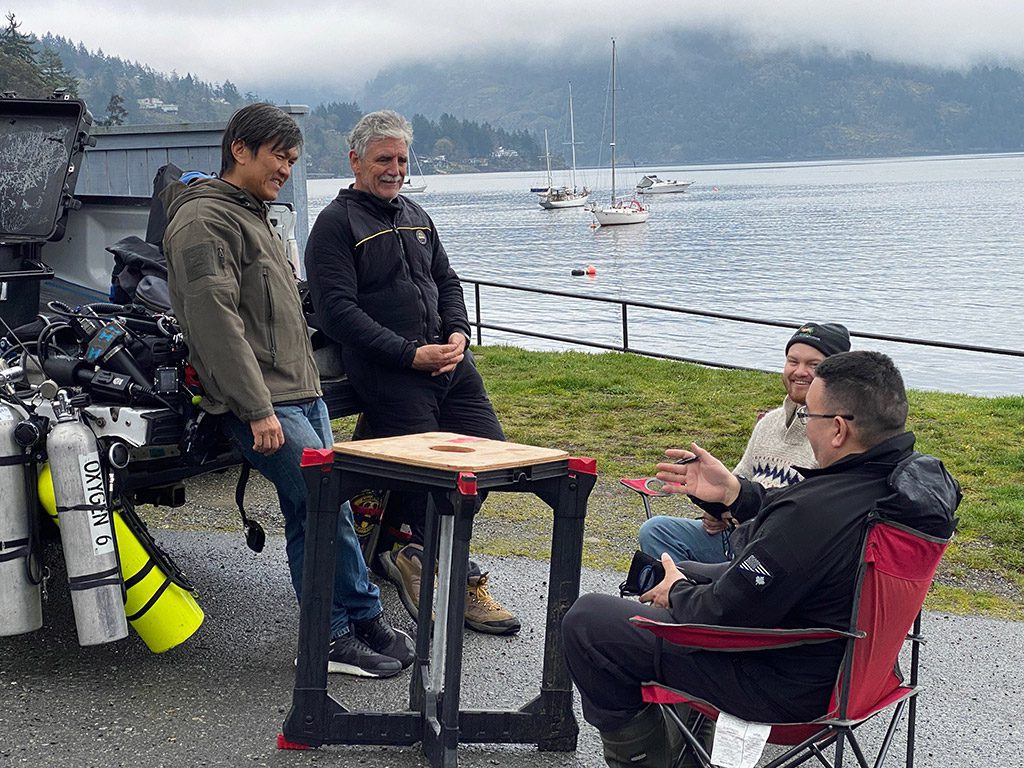
A culture emerges from the interactions and relationships of people within a team, a group, an organisation, or a nation. It is, therefore, a property of the collective under question, not of an individual. Furthermore, because these groups are made up of people, their interactions are complex, which means there are sometimes unpredictable and irreversible responses. Some might think you can drive cultural change top down. Direction might come from above, but you might be surprised at the outcome. I remember being on a squadron when the boss had united everyone together. Unfortunately, it was against him…
What we can do if we want to change culture is nudge people in the right direction. Dave Snowden is the founder of Cognitive Edge, which uses a novel tool called Sensemaker, that works with his Cynefin framework to understand social and cultural interactions in complex environments. Using the results from his ethnographic studies, he describes the adaptive process as “More stories like this, less stories like that.”
Peter Drucker is often quoted as saying, “Culture eats Strategy for breakfast.” The basic premise of that statement is that even if you come up with a brilliant plan that is based on logic and evidence, unless you address the cultural aspects of the change, the strategy will fail. This is something I continually struggle with as I bring Human Factors into the diving world. Hence, the next section is about diving culture.

Diving Culture
In terms of sports with considerable exposure to risk, the culture is interesting. When I speak with aviation, healthcare, oil and gas, and other high-risk domain workers about the struggles I am having, they express surprise at the diving industry and how it is managed.
We will start with the structure for diver education and look at the behaviours and relationships that we can observe. As you read each paragraph, think about the values, beliefs, and behaviours that are present, maybe referring to the Culture Cloud to recognise these artefacts.
At the highest levels, there are bodies like the World Recreational Scuba Training Council (WRSTC), the Rebreather Training Council (RTC) and the Rebreather Education and Safety Association (RESA). These bodies are made up of members, or invited participation, from the training agencies and ‘set’ standards which the agencies then comply with or validate. At least one of these bodies operates on a unanimous voting basis, which means any change that impacts the commercial viability of a training organisation can be vetoed by that organisation.
Developing safety within a system is not cheap, but if it prioritises based on statistically acceptable numbers of dead divers per 100 000 dives, then the status quo is likely to carry on. Margaret Heffernan has described such behaviour in other domains as “willful blindness.”
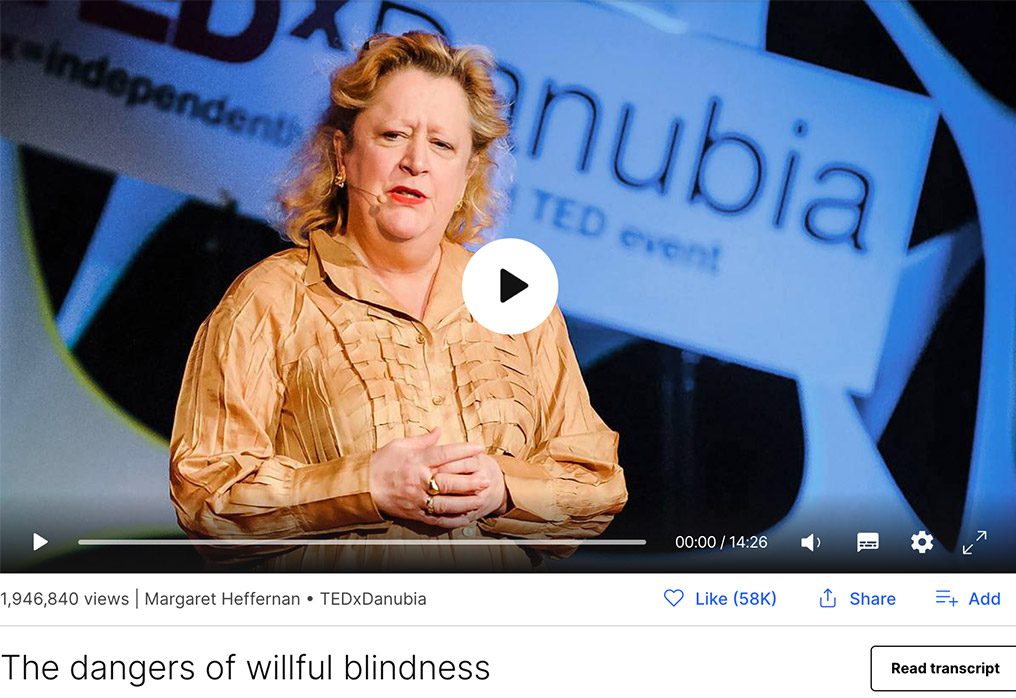
The training agencies then use these standards to develop training packages to train instructor trainers who then teach instructor candidates how to teach classes to students so that the students can pass the course. The majority of training agencies do not require an active re-qualification process (physically teaching under the eyes of an instructor examiner) to remain in instructor status; rather they only have to pay renewal fees. This approach can lead to a drop in the perceived value of education.
Furthermore, without critical feedback, drift should be expected with a potential reduction in safety. Diver training and development can be seen as a rote process, based around compliance rather than the transfer of knowledge. True education is two-way. If an instructor goes into a class with the attitude, “my role is to teach you to pass the class,” then the instructor has no incentive to learn. Whereas if the instructor approaches the class with the perspective, “we are all going to learn something,” then they will look for areas of improvement and readily ask for critical feedback.
The emphasis within diver education (and instructor development) is often on continuing education—giving students enough information and skills to pass the current course and then whet their appetites for the next one. A culture of ‘card collecting’ is not unusual. Language impacts culture too. What do most people think about the words ‘Advanced’ and ‘Master’, then consider them in the context of diving e.g., Advanced Open Water, Master SCUBA diver, or Master SCUBA Diving Instructor. There is no performance-based or evidence-based definition for consolidation to move between courses. As such, divers can move rapidly through the system, even to instructor level, without much real-world experience. Experience and expertise come from pushing boundaries, making mistakes, and reflecting on them.
However, talking about mistakes, especially as an instructor, is not something actively promoted within agencies, as it is perceived to open instructors up for litigation. The mantra of “dive to your limits and training” means that the divers’ experience is based around an environment where everything (or most things) are controlled.
Sully’s quote, after landing on the Hudson on January 15, 2009, is relevant at this point. “One way of looking at this might be that for 42 years, I’ve been making small, regular deposits in this bank of experience, education, and training. And, on January 15, the balance was sufficient so that I could make a very large withdrawal.” Organisations don’t want to say “Dive outside your limits to develop experience,” as this could open them up for litigation.
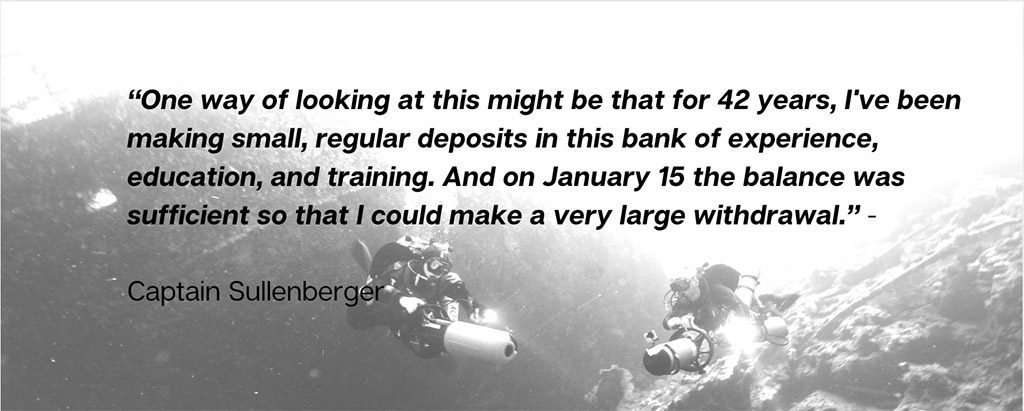
The focus on numbers of certificates issued by instructors as a measure of competence can lead to people gaming the system. How is the quality being assessed if unsafety is only visible when something goes wrong? The use of questionnaires post-class might help identify lack of safety, but most students don’t know what they don’t know, and if they are in a small community, students are not going to critique someone of power/influence there. Having a feedback system is being compliant to WRSTC/ISO standards, but does it add real value to safety and/or quality?
The number of dives to progress through the system can have implications too. Make it too high, and the sales pyramid doesn’t work. Make it too low, and again people game the system. The minimum number of dives to enter an instructor exam for one agency is 100 (which also includes all training dives). A dive requires a minimum of 6 m/20 ft and 20 mins in duration. Guess what a candidate can do? As the instructor development course is about teaching instructors to teach students how to pass a course, do these minimum standards prepare them for teaching real students?
A rebreather diver needs 25 hours between certification levels to progress. They spend hours in a local quarry in benign conditions building those hours, ascending a slope rather than doing mid-water shot-line or dSMB ascents, because the slope is easier. Does this prepare them for the uncertainties and failures they will have to deal with on the next course and, more importantly, deeper dives with more decompression overhead?
There is no formal training of non-technical skills or human factors in training agency materials—with one exception—and even then, it is only a few slides. As such, we should not be surprised that divers are unable to run learning-focused debriefs, that they don’t understand how and why checklists work, that instead of leading they are managing or using their authority to educate others, and that they are unable to undertake an incident investigation which focuses on learning and not blaming.
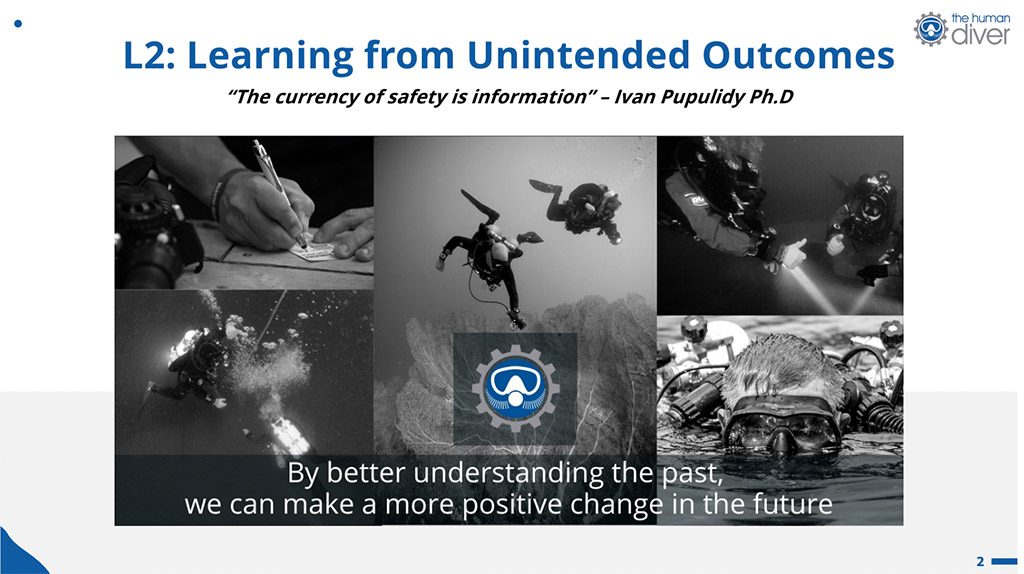
If we now move to outside of the training environment, the following are just some of the different groups I could think of. These could all be part of a huge Venn diagram, with the outside boundary defined as ‘divers’.
- ’Recreational’ diver
- ’Technical’ diver
- Rebreather diver
- Cave diver
- Divemaster
- Instructor
- Instructor Trainer/Course Director
- NE United States Wreck Community
- Floridian Cave Community
- Mexican Cave Community
- UK Cave Diving Group
- South East Asian diving communities
- Red Sea diving communities
- Australian Cave Diving communities
- UK Wreck Diving groups
- Agency specific affiliations and communities
- Equipment manufacturers
- Factory-certified CCR trainers
- Insurance companies/underwriters
Each one of these groups will have a different culture; a different perception of risk; a different preference for equipment, protocols, procedures, personal financial investment; and most importantly, a different view of what safe means. Subordinate groups will demonstrate some of their parent group’s cultural artefacts and behaviours but will also develop many of their own. These subordinate-group behaviours and values will include attitudes toward checklists, execution of pre-dive briefs, and post-dive debriefs, supporting co-teaching to learn from each other, and ability to share near-misses and incidents within their own and wider communities.
One of the consistent behaviours seen through personal interactions and social media is the focus on shiny stuff over personal knowledge, skills, and attitude development. There is a certain irony in spending thousands on diving equipment, and then trying to find a cheap instructor or a “name” to teach you how to use it. Equipment is not a substitute for competence and experience. Furthermore, self-reflection is the first part of self-development. If you are unable to reflect on your opportunities for development, you are unlikely to make much progress! Cognitive biases likely get in the way of learning here—knowledge is intangible, because it needs to be applied to something; shiny stuff is tangible.
Now that we’ve looked at Safety and Culture—more so at Diving Culture— we’ll look at how this comes together for Safety Culture.
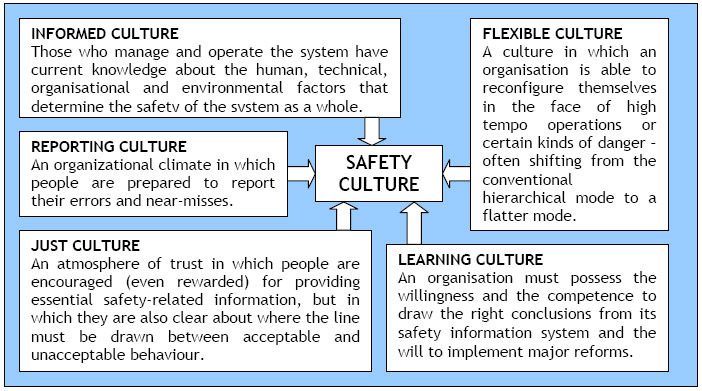
What is a Safety Culture?
Following the Chernobyl disaster in April 1986, the term “a lack of a safety culture” was used by the IAEA to describe the performance of the operators and managers at the plant. In 1988, the IAEA defined a safety culture as “… that assembly of characteristics and attitudes in organizations and individuals which establishes that, as an overriding priority, nuclear plant safety issues receive the attention warranted by their significance.” Since then, the term has been used on numerous occasions to describe the values and beliefs of organisations when safety performance has been lacking following an accident.
Conversely, there is a belief that by developing a positive safety culture within an organisation, then safety can be improved. This might be correlated, but it isn’t causal. There is also a belief that safety culture can be measured and then plotted on a graph to determine how good an organisation is. Examples of this include Hudson’s Ladder of Safety Culture and the Du Pont Bradley curve.
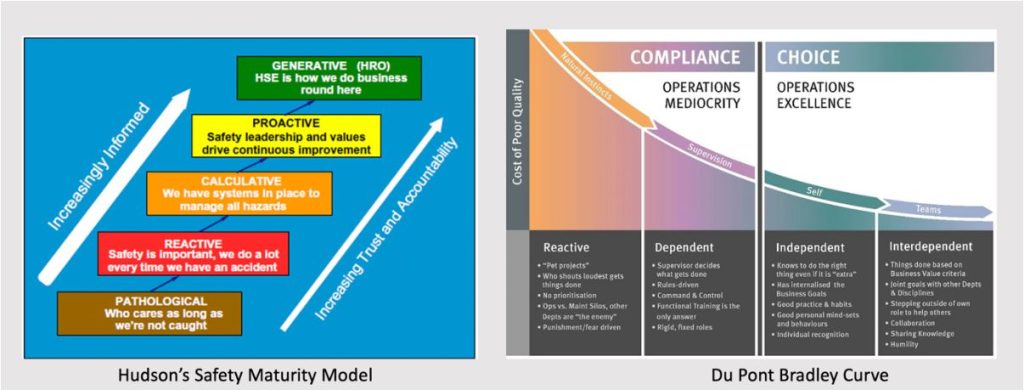
The problem with such simplistic approaches has to do with how relationships and interactions are measured. You might be looking at behaviours (which can be gamed) but what happens when no one is looking? Look back at the Culture Cloud, and you’ll see how hard it would be to get a coherent set of beliefs and values in an organisation with hundreds or thousands of people across different levels and different teams. Now think about diving and the fact that most divers are not part of a formal organisation!
To create a more uniform safety culture within an organisation or domain requires a significant event to occur—an event that normally involves the massive loss of life: Piper Alpha in 1988, Tenerife disaster in 1977, Three Mile Island in 1979, and Boeing 737 Max in 2018 & 2019. Fortunately, this hasn’t happened in diving, although a series of events over the last few years may cause a shift, especially the change in insurance coverage in the US and the Linnea Mills case in the US.
Notwithstanding the issues having to do with efforts to measure a safety culture, Professor James Reason, in his book, Managing the Risks of Organisational Accidents, described a safety culture as being made up of five key areas: Just Culture, Reporting Culture, Informed Culture, Learning Culture, and a Flexible Culture. The next sections will look at each of these, describe what they are, and what they look like in diving.
Just Culture
This is where people understand the boundaries of acceptable and unacceptable behaviours and actions based on the context and their experience. Unacceptable behaviours are dealt with in a consistent, just, and fair manner. The August issue of InDEPTH (Is a Just Culture needed to support learning from near misses and diving accidents?) looked in detail at this topic in the diving industry. In summary, it doesn’t really exist in the diving industry at large, although it might be present in pockets or teams. Notwithstanding this, it is essential to support the flow of information.
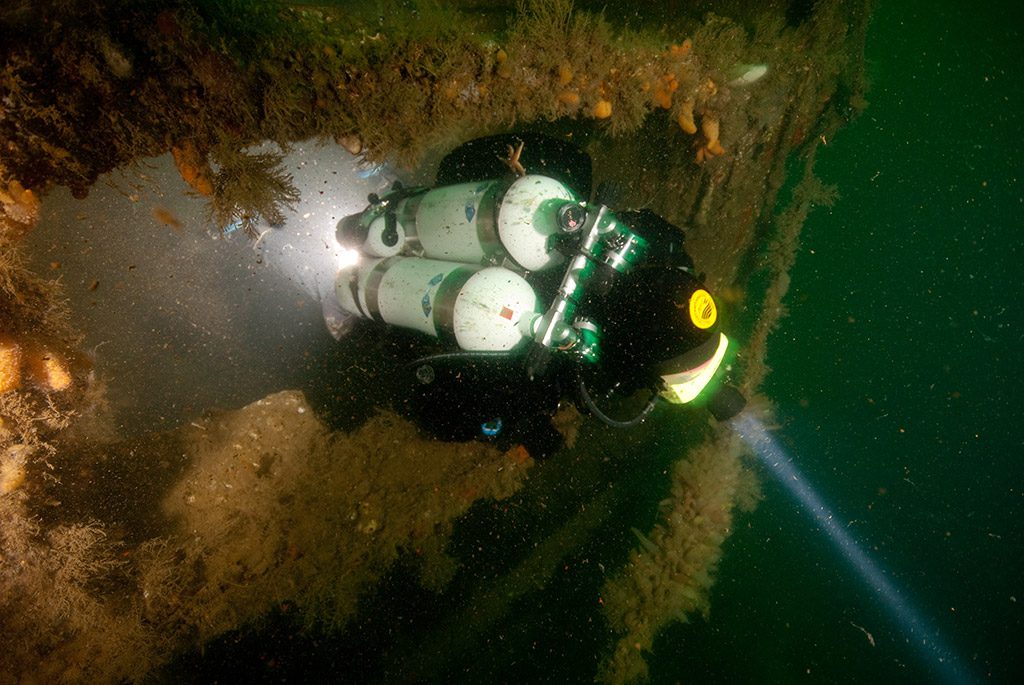
Reporting Culture
This takes two parts. Firstly, people are confident that they can report safety concerns without fear of blame or some form of retribution. Secondly, it is considered normal to report events or situations that are unsafe or that provide learning opportunities. Unfortunately, these are somewhat lacking in diving too. Given the fear of litigation and legal discovery, context-rich reports, which contain deviations and mistakes, are rarely submitted. Furthermore, even if something serious occurs and should happen to be reported, most of the initial conversations at an agency level that take place take place via telephone where information cannot then be open to discovery. This means critical details will be lost for two reasons—individual memories fade, and organisational memory loses out as the information is only held by a few people.
Social media provides a platform for reporting adverse events and near misses. Unfortunately, a large proportion of social media users do not understand the concepts of human factors, human error, and why adverse events occur, looking at simple, judgemental comments that seriously reduce the likelihood others will share events.
Learning Culture
This is where an organisation learns from its mistakes and makes changes to unsafe conditions. Organisations like Divers Alert Network and the British Sub Aqua Club have reporting systems, but their published reports lack detail because it isn’t necessarily captured. This lack of detail means learning is limited. There is no formal or structured learning/investigation process that looks at incidents or accidents from the perspective of learning or error-producing conditions (See: Don’t just focus on the Errors – Look at the Conditions)
Just because data exists, it doesn’t mean it is always used. In 2018, a number of researchers associated with PADI published a report which listed 122 diving fatalities and their associated violations (Shreeves, Buzzacott, Hornsby and Caney, 2018, Violations of safe diving practices among 122 diver fatalities.
Of note, these activities involved PADI Members but took place outside of formal training classes. However, if I were the safety risk manager of a training organisation, I’d want to know about the same information INSIDE training classes, because I might be able to do something about those. At the same time, I know that if such research was done, then it would be subject to discovery and would harm the organisation!
Another example of not applying learning is the 2011 report from the UK Health and Safety Executive (HSE, 2011, Assessment of manual operations and emergency procedures for closed circuit rebreathers) that looked at normal and abnormal CCR operations and made the recommendation that HF training be mandated as part of CCR training. That recommendation has not been taken up by any of the training agencies as yet.
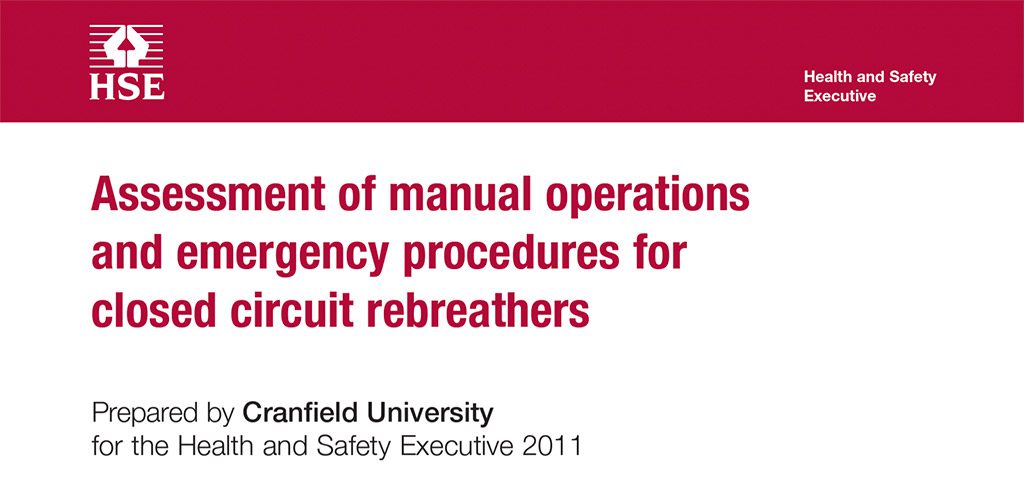
Numerous opportunities have been given to training agencies for white label copies of the online HF materials so that they can be incorporated into their own training programs. Until recently, these have all been turned down – one senior training staff member from an agency asked if the adoption of these materials would encourage dive centres to move from other agencies to their own (it wouldn’t!) Another regional licence holder asked if they could have exclusivity for their regional materials to gain a commercial advantage. Training organisations are commercial organisations, even the not-for-profit ones, so this position is fully understood because it costs time and money to implement a change, and there has to be a return on that investment.
Recognising the workload involved in developing and hosting materials, RAID has taken a different approach and is now directing RAID instructors and divers to the Human Diver online Essentials course rather than spending time putting HF materials inside their own learning management system.
Informed Culture
An informed culture is where the organisation collects and analyses relevant data to stay informed of its safety performance. This is closely linked with a learning culture. Many of the adverse events happen outside of the training systems, and so agencies would not be interested in tracking this data. Even when agencies do experience adverse events inside their own systems, sharing is limited, presumably because of a fear of litigation or competitors highlighting these issues as a reason to move from one agency to another. In conversation with divers during the preparation of this article, I learned that there are instances of issues being raised to manufacturers which were subsequently dismissed as not important. Again, the reason might be that a change would invalidate a CE mark and cost the manufacturer a significant amount in retesting.
Flexible Culture
This is where the organisation can reconfigure its chain of command if faced by a dynamic and demanding task environment. This doesn’t really apply to the diving industry given how it is organised; however, formal project diving teams in public safety or scientific diving might be able to adopt this.
Conclusion
A safety culture is a coherent, shared value and belief system that safety is important and is at the same level of importance as other aspects of a business, be that financial management or resource provision. While the diving industry has organisations, they are not large. Most divers go diving outside of any organisational structure, moving between teams and groups based on opportunities that come up. Divers and instructors are not (always) tied to a single agency for their development, and so they are exposed to different perspectives, different equipment configurations, and different cultures.
Safety is a relative term. You cannot be absolutely safe in diving. There is always an inherent risk that you can end up dead or injured, even in shallow waters or when diving within the limits of tables or dive computers. Some diving appears safer than other, but we need to remember that safety is a system property, not that of an individual, or a piece of equipment.
While I do not believe that a clearly defined Safety Culture can exist in sports diving for the reasons stated in this article, I don’t think we should stop trying to improve diving safety. However, I do believe that we should be focusing on the elements that create high performance in uncertain circumstances i.e., non-technical skills, human factors, psychological safety, and a Just Culture, and that we not simply focus on compliance, technical skill acquisition, and the latest shiny thing.
References:
United Kingdom Health and Safety Executive: Assessment of manual operations and emergency procedures for closed circuit rebreathers. 2011.
International Maritime Health: Violations of safe diving practices among 122 diver fatalities. 2018.
The Human Diver: Don’t Just Focus on the errors—Look at the Conditions. 2022.
InDEPTH: Is a Just Culture needed to support learning from near misses and diving accidents?. 2022.
DiverNet: Jury to Decide on PADI Role in Teenager’s Death. 2022.
TED: Margaret Hefferman: The dangers of “willful blindness.” 2013.
The Cynefin Company: Sensemaker. 2022.
Safety Science: HRO and RE: A pragmatic perspective. 2019.
NASA: Report of Columbia Accident Investigation Board, Volume I. 2003.
Safety Science: Applying systems thinking to analyze and learn from events. 2010.
California Management Review: Organizational Culture as a Source of High Reliability. 1987.
Dive Deeper
You can find a complete list of InDEPTH articles on human factors here: Human Factors

Gareth Lock has been involved in high-risk work since 1989. He spent 25 years in the Royal Air Force in a variety of front-line operational, research and development, and systems engineering roles which have given him a unique perspective. In 2005, he started his dive training with GUE and is now an advanced trimix diver (Tech 2) and JJ-CCR Normoxic trimix diver. In 2016, he formed The Human Diver with the goal of bringing his operational, human factors, and systems thinking to diving safety. Since then, he has trained more than 450 people face-to-face around the globe, taught nearly 2,000 people via online programmes, sold more than 4,000 copies of his book Under Pressure: Diving Deeper with Human Factors, and produced “If Only…,” a documentary about a fatal dive told through the lens of Human Factors and A Just Culture.



















